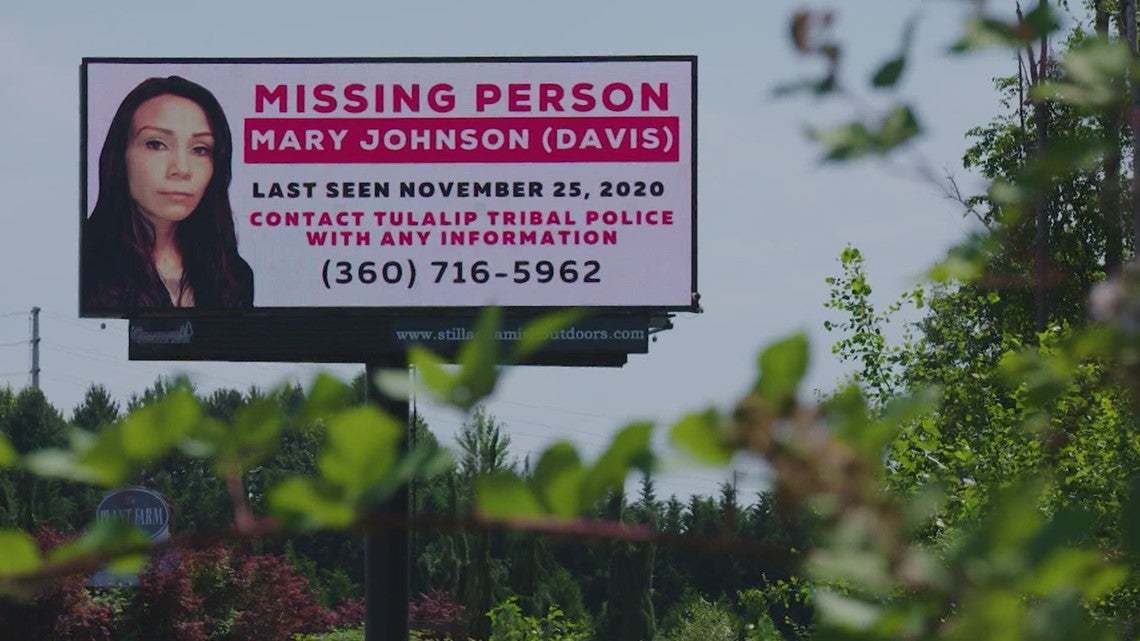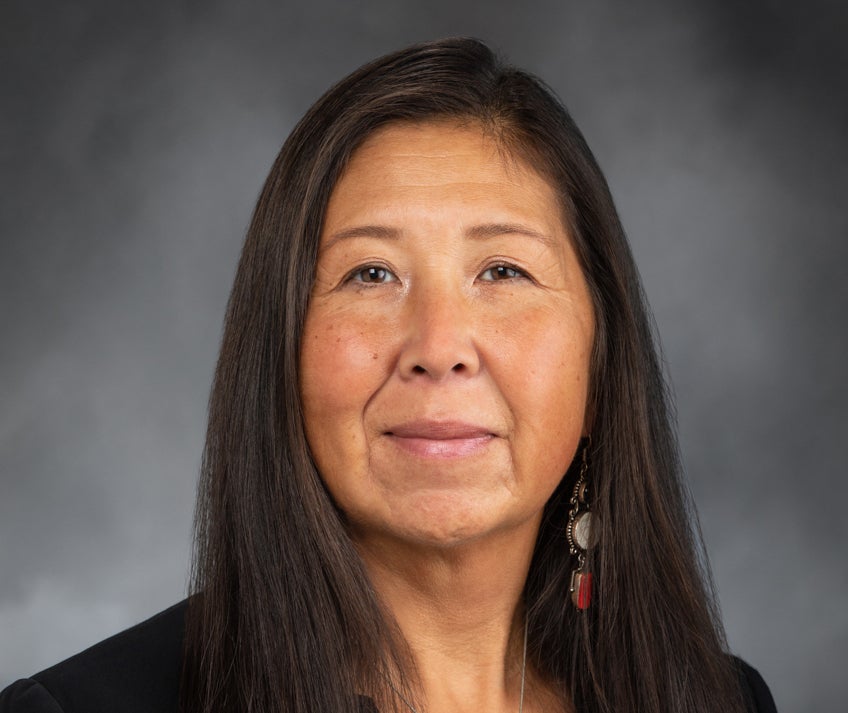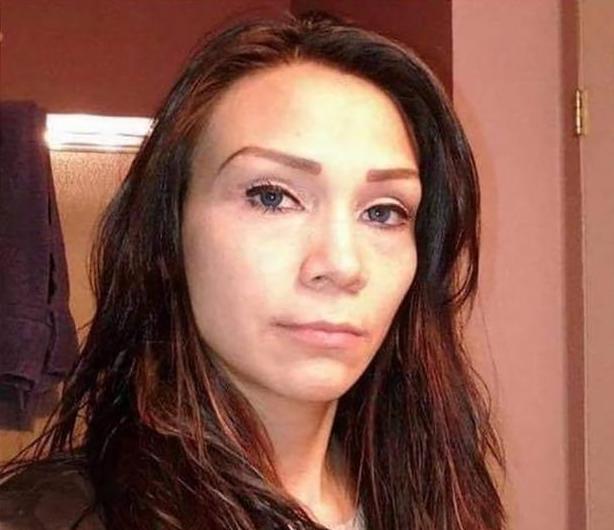America’s first missing person hotline for Indigenous women is a ‘moment in history’, families say
In parts of the US, Native women are 10 times more likely to disappear, writes Andrew Buncombe


Your support helps us to tell the story
From reproductive rights to climate change to Big Tech, The Independent is on the ground when the story is developing. Whether it's investigating the financials of Elon Musk's pro-Trump PAC or producing our latest documentary, 'The A Word', which shines a light on the American women fighting for reproductive rights, we know how important it is to parse out the facts from the messaging.
At such a critical moment in US history, we need reporters on the ground. Your donation allows us to keep sending journalists to speak to both sides of the story.
The Independent is trusted by Americans across the entire political spectrum. And unlike many other quality news outlets, we choose not to lock Americans out of our reporting and analysis with paywalls. We believe quality journalism should be available to everyone, paid for by those who can afford it.
Your support makes all the difference.Washington State has become the first in the nation to set up a missing person’s alert especially for Indigenous women – a move supporters believe marks “history in the making”.
In parts of America, Native women go missing and suffer violence, 10 times more often than white women.
And yet their cases receive far less attention from the media and the authorities, something the late Black broadcaster Gwen Ifill referred to as missing “white woman syndrome”.
Now, a missing person’s hotline, similar to the “silver alerts” that are activated in 37 states when vulnerable adults go missing, is being established to spread information about Indigenous women who disappear.
The information about that person will be put on message boards, travel radio messages and dispatched to local media.
Experts say the first 24 hours or so after a person goes missing is the most critical time if they are to be returned safely.
“Native American women are four times likely to be taken than white women,” state representative Debra Lekanoff, who is herself Indigenous and who championed legislation to establish the alert system, tells The Independent.
“Among all races, Native Americans have the highest rate of missing and murdered. This has been a crisis not only the United States, but in Canada. Since back to colonisation, our people have been raped, murdered, taken and enslaved, and it’s been a form of genocide. But we’re still here.”
Lekanoff says that like many Indigenous parents she felt obliged to educate her daughter at a very early age about her personal safety, and the potential danger she was in because of the way she looked.

“Every one of us as Native American girls have been sat down and talked to – ‘who you are and what you look like puts your life in jeopardy’,” she says.
“You need to know your name. You need to know your number. There is a time and a place when you go out, and there are places you don’t go to. You are more likely to go get taken than any other race. We’re taught that at four or five or six-years-old. I have to teach that to my daughter.”
She adds: “It’s like an African American boy. He’s being told the same thing at a young age, of how to be careful, where to place your hands when you get pulled over, and never look a police officer in their face.
“That’s their story. My story is what I’ve been told, and every girl gets told. But a girl who looks like me and sounds like me, and has the high cheekbones, we are at jeopardy more so than any other women, and the statistics show that.”
The intense scrutiny devoted last year to the case of Gabby Petito, a young woman from New York state who disappeared after setting off on a cross-country adventure with her boyfriend Brian Laundrie, eventually pushed some media outlets to ask why cases of Indigenous woman received a fraction of the coverage, if any.
In Wyoming alone, the state where Petito, 22, disappeared and her remains were later discovered, at least 710 Native Americans went missing between 2011 to 2020, according to the state’s Missing and Murdered Indigenous People Task Force,
It found 85 per cent of those reported missing were children or young people, and that 57 per cent were female. It also discovered even though Native Americans accounted for less than three per cent of the state’s population, they made up 21 per cent of homicide victims.
“As native people, we already know we come up against racism on a daily basis, and also a sense of not being important,” Lynnette Grey-Bull, a member of both the Wyoming taskforce and the Northern Arapaho tribe, told The Independent last year.
“We understand that if we don’t have blonde hair, or blue eyes, we don’t get to make it on the six o’clock news or front page of the morning edition. These things don’t happen for us.”
Research conducted by the Urban Indian Health Institute in Seattle found that in Washington State Indigenous women go missing four times more often than white women.
Posters for people who have disappeared often appear along the I-5 interstate, that stretches 1,400 miles and connects the US border at Mexico to Canada. Across the border in Canada, a 450-mile stretch of Highway 16 between Prince George and Prince Rupert, has been labelled the “Highway of Tears” for the large number of Indigenous women who have disappeared along its route in past decades.
“I just am thankful to the broadcasters – you all are removing the hand from the mouth and allowing us the opportunity to inform our communities that there is a Native American woman who’s missing,” says Lekanoff, a Democratic house legislator who represents Washington’s 40th district.
She adds: “The broadcasters’ removal of the hand is letting those unheard screams out.”
The alert system has received widespread political support. The legislation passed both chambers of the legislature in Olympia unanimously.
“We must do everything we can to address the epidemic of murdered and missing Indigenous women and people in the state,” Washington’s Attorney General Bob Ferguson said in a statement.
It also appears to have the support not only of activists, but relatives of people who disappeared.
Mary Johnson, a sister of Nona Blouin and Gerry Davis, disappeared from a tribal reservation north of Seattle in 2020.
The FBI eventually offered a $10,000 reward for information about the 40-year-old, but uncovered no genuine leads. The sisters are still trying to find out what happened.
They say they believe the alert being established in their state can make a critical change.

“I totally agree this would be helpful,” says Blouin. “If we had this back when Mary first went missing, there would have been a really good chance of finding her.”
She adds: “I’m really happy they’re doing this, because, I hate to say it, but in the future, there’s going to be missing Indigenous women. And I think it’s really going to help the families find their loved ones.”
Davis agrees.
“I think this is an amazing point in time. And this is like going to make history,” she says.
She believes the alert system will help all missing people, Indigenous or not. Anyone who has lost someone is “family”, she says, because “we all know the pain we’re all going through”.
She says she hopes society will stop victim blaming when people go missing, be it highlighting drug or alcohol addiction, or other problems, and rather focus on their common humanity.
“That right there is history in the making,” she says. “And [Lekanoff] is ….amazing to get that set up.”
A bill signing ceremony is going to take place on Puyallup tribal land later this week.
“We think this is strong legislation that is going to help disproportionately impacted communities and raise awareness more broadly for the problem in our state,” says Governor Jay Inslee’s spokesperson, Mike Faulk.
Lekanoff says the ceremony will be attended by representatives of Washington state’s 29 federally incorporated tribes, and marked with songs and ritual.
“We’ll be doing an honouring and ratification within our own tribal communities, to share a bit of ceremony, to let the women who have passed on to the other world hear the songs and the prayers, so they know they’re not forgotten,” she says.
“We’ll be singing songs and prayers for women who are still missing, to let them know ‘We’re still looking for you – don’t give up hope’.”
She adds: “And we’ll be singing to the future, to let those women know, who have yet to come and be part of this earth, that we will take care of them.”
Subscribe to Independent Premium to bookmark this article
Want to bookmark your favourite articles and stories to read or reference later? Start your Independent Premium subscription today.
Join our commenting forum
Join thought-provoking conversations, follow other Independent readers and see their replies
Comments